Bamboo and bamboo architecture
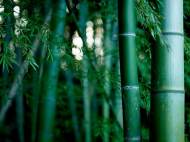 Bamboo – what can’t it do? To be honest, it can’t do many things, but its characteristics make it better than some dominant materials around us. As we mentioned in our roundup of most popular green architecture news and articles of 2012, you can expect a wider scope of news and articles regarding architecture. Hence, I’m glad to start a new series about bamboo architecture and various uses of this easily renewable resource.
Bamboo – what can’t it do? To be honest, it can’t do many things, but its characteristics make it better than some dominant materials around us. As we mentioned in our roundup of most popular green architecture news and articles of 2012, you can expect a wider scope of news and articles regarding architecture. Hence, I’m glad to start a new series about bamboo architecture and various uses of this easily renewable resource.
Bamboo is spread nearly all across the globe, if you don’t count the extremely cold or drought areas. Records dating back more than seven thousand years mention products made of bamboo such as arrows, paper, music instruments, and books. It’s a strong, durable, highly renewable resource that grows faster than trees. It can be harvested without harming the plant, making it an environmentally responsible resource.
With the last sentence in mind, you have to bear in mind that it is important where and how the bamboo is grown, harvested and processed.
Unlike most cash crops, bamboo requires no agricultural chemicals to grow. Bamboo shouldn’t be grown in mono culture forests, since absence of other trees in the area can influence the soil quality as well as the wildlife after harvesting. Bamboo doesn’t need to be replanted when properly cut – the root system stays intact and produces another shoot. After the harvest, some bamboo gets heavily chemically processed, and we can’t truly call it eco-friendly.
But, what can bamboo do?
Bamboo absorbs carbon dioxide and releases 35 percent more oxygen into the atmosphere than an equivalent stand of hardwood trees. Some species of bamboo grow more than three feet each day, making it easily harvested in one to five years. In comparison, hardwoods like oak take at least forty years to mature before they can be harvested.
After harvesting, virtually every part of the plant is used to make a wide variety of products. Shoots of most kinds of bamboo are edible and widely available in both fresh and canned versions. They are used in numerous Asian dishes and broths containing bamboo, and it is also used in Chinese medicine for infections treatment and healing. Bamboo can also be used in water desalination, where a bamboo filter removes the salt from seawater.
It is also used in textile production, however, the fibers of bamboo are so short that they are impossible to transform into yarn in a natural process. To accomplish this, the fibers are broken down with chemicals and extruded through mechanical spinners. Until a better way to create yarn from bamboo, we can’t claim it can be considered environmentally friendly since the process requires lye, carbon disulfide and strong acids.
Bamboo can replace the use of wood for nearly every application including paper, musical instruments, charcoal, and much more can be made from bamboo. Some contemporary companies are using bamboo to produce bicycles and skateboards, fishing rods, and computer giant Dell uses bamboo packaging to protect and store devices such as tablets, smart phones and laptops.
The particularly interesting use of bamboo for our upcoming series is in flooring, furniture, and building materials.
Bamboo in architecture
When thinking about bamboo architecture, layman imagines make-shift survival structures. However, bamboo has a long tradition of being a construction material within the cultures of South Asia, East Asia and the South Pacific, as well as some parts of some extent in Central and South America. While some cultures use it as purely decorative and supplemental elements, others used it to build bridges or buildings that are over six stories high.
Various structural shapes may be made by training the bamboo to conform to them as it grows. For instance, squared sections of bamboo can be created by compressing the growing stalk within a square form. Arches may similarly be created by forcing the bamboo’s growth with the desired form, and costs much less than it would to assume the same shape in regular wood timber. Alternatively, you can use heat and pressure to change the shape of the shoot.
While tensile strength remains the same throughout the age of the bamboo plant, the plant fiber strength increases as it gets older. Bamboo grown on slopes is stronger than bamboo grown in valleys, and bamboos grown in poor dry soils are usually more solid than those grown in rich soils.
When its shoots are cut into thin strips, boiling and dried, they can be glued and pressed in order to create sheets and planks. Products made from bamboo laminate, including flooring, cabinetry, furniture and even decorations, are currently surging in popularity. The quality of bamboo laminate varies between manufacturers and the maturity of the harvested plant. The sturdiest products fulfill their claims of being up to three times harder than oak hardwood, but others may be softer than standard hardwood.
Bamboo intended for use in construction should be treated to resist insects and rot in a way that increases its longevity and creating minimal impact onto environment. The most common way to preserve bamboo at the moment is a mixture of borax and boric acid. Another process involves boiling cut bamboo to remove the starches that attract insects. In addition, because bamboo has a slick waterproof coating, it cannot be painted very easily, but it can be accomplished with the right types of paint.
In 2006, International Bamboo Building Design Competition was created to devise inspiring designs and spread the word about bamboo as a structural material among architects, designers, and builders.
While it may take some time for it to become more widely used as a major contraction element in different climates, its versatility, beauty, sustainability, and properties will surely make it far more dominant for use in supplemental elements, decorations, flooring and furniture.

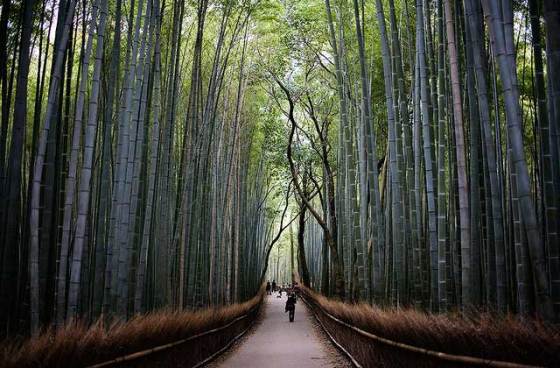
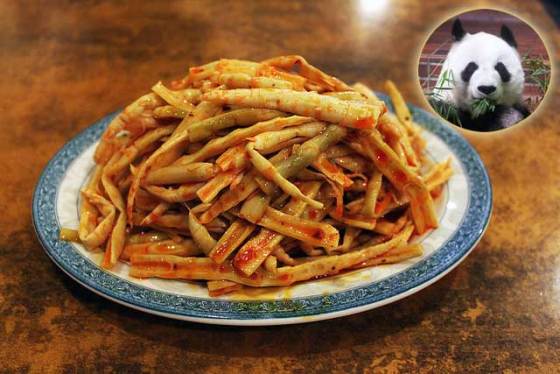
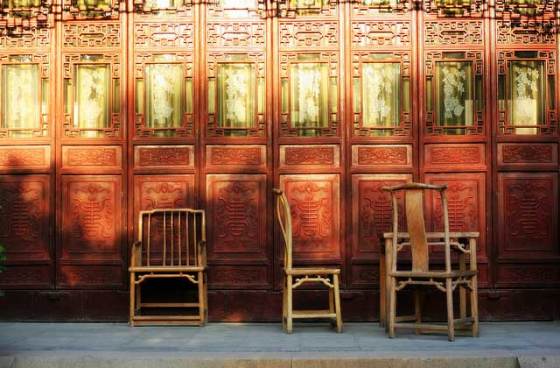
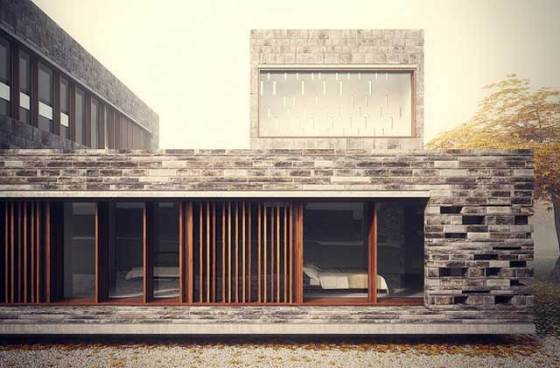








Approved by panda. :D
I bow to you, sir!
Bamboo is far more sustainable so every company whose material requirements fit bamboo’s properties should make a switch to it.
+1 for Leon’s comment about the food picture with panda in it :)